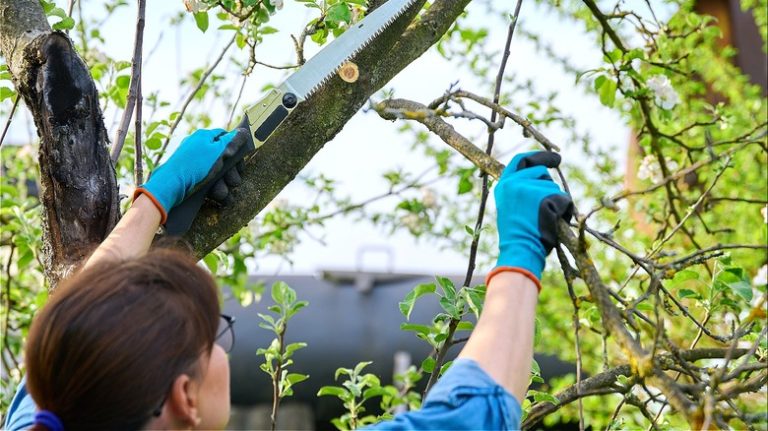Juniperus horizontalis, commonly known as creeping juniper or creeping cedar, is a versatile plant that can tolerate various growing conditions. This evergreen shrub is native to North America, where it can be found growing on rocky slopes, in dry soils, and even in poor-quality soil types. With its low-growing, needle-like foliage and v-shaped form, Juniperus horizontalis is an excellent choice for ground cover in both residential and commercial landscapes.
One of the most appealing features of Juniperus horizontalis is its ability to withstand harsh conditions. This plant is highly drought tolerant and can survive in areas with limited water availability. It can also tolerate extreme heat and strong winds, making it an ideal choice for gardens located in windy coastal areas. Additionally, Juniperus horizontalis is resistant to many common pests and diseases, making it a low-maintenance option for gardeners.
Juniperus horizontalis comes in many different cultivars, each with its own unique characteristics. Some cultivars, such as ‘Blue Rug’ and ‘Wiltonii’, have a bluish tinge to their leaves, while others, like ‘Mother Lode’ and ‘Villosa’, have a more brownish hue. Regardless of the variety you choose, Juniperus horizontalis spreads quickly and densely, forming a carpet-like cover that can reach heights of only a few inches.
This ground cover is relatively easy to grow and requires minimal care. Juniperus horizontalis prefers well-draining soil and can tolerate a wide range of soil types, including poor-quality soil. It is best to plant Juniperus horizontalis in a location with full sun exposure, as this will promote its dense and compact growth. While it does not require frequent watering, it is important to water the plant deeply during periods of drought or when newly planted. Additionally, fertilizing the plant once a year with a slow-release fertilizer will help ensure healthy growth.
Propagation of Juniperus horizontalis is most frequently done through cuttings. By taking stem cuttings from a healthy plant and rooting them in a well-draining soil mix, you can easily propagate new plants. Another method of propagation is by layering, where branches are buried in soil while still attached to the parent plant, and once rooted, they can be cut and transplanted. A third method is through seed, although this process can take several years to produce a mature plant.
Whether you’re looking for a low-maintenance ground cover or a plant to add texture to a rock garden, Juniperus horizontalis is an excellent choice. Its ability to tolerate various growing conditions, its attractive foliage, and its versatility make it a popular choice among gardeners. With proper care and attention, Juniperus horizontalis can be a long-lasting and beautiful addition to any landscape.
Creeping Juniper
The “Juniperus horizontalis” or Creeping Juniper is a popular variety of Juniperus that is known for its low-growing, spreading growth habit. It is a common plant in gardening, and you can find it in various landscapes, including rock gardens, slopes, and carpet mats. The Creeping Juniper has V-shaped foliage that is purple-tinged, giving it an attractive look.
This variety of Juniperus is a creeping shrub that grows horizontally, forming mats that can cover large areas. It is a hardy plant that can withstand various temperature conditions and is suitable for USDA hardiness zones three to seven. Creeping Junipers prefer well-drained soils, but they can still thrive in poor soils and are tolerant of drought conditions once established.
When it comes to care, Creeping Junipers are relatively low maintenance. They need regular watering during their first year of growth, but once established, they are quite drought-tolerant. Fertilizing is not always necessary, but if you choose to do so, use a balanced slow-release fertilizer in late spring or early summer. Pruning should be done in late winter or early spring to promote new growth and maintain their desired shape.
Propagation of Creeping Junipers can be done through various methods, including stem cuttings and layering. Theyll produce female and male cones on separate plants in the spring, which can be collected for propagating new plants.
While Creeping Junipers are generally hardy plants, they can face some issues. Spider mites and fungus can be common problems, especially in humid conditions. In windy areas, the branches can break or bend, so it is advisable to plant them in a sheltered location. If you have any gardening problems or questions, you can always ask your local cooperative extension for guidance.
In conclusion, the Creeping Juniper (Juniperus horizontalis) is a popular and attractive variety of Juniperus that is commonly used in landscaping. Its spreading growth habit and purple-tinged foliage make it a desirable choice for rock gardens and slopes. With proper care and maintenance, this shrub can thrive in various soils and temperature conditions and add beauty to any outdoor space.
Juniperus horizontalis
Juniperus horizontalis, also known as Creeping Juniper or Creeping Cedar, is a common coniferous shrub that belongs to the cypress family. It is native to North America, particularly in the Great Plains region. This low-growing evergreen shrub is known for its spreading, carpet-like form, with branches that grow horizontally and take root where they touch the ground, forming mats or carpets.
Juniperus horizontalis is a hearty plant that can withstand various growing conditions. It is most commonly found in zones 3 to 9 and thrives in full sun to partial shade. It is tolerant of a wide range of soil types, including dry and sandy soils, as well as soils with poor drainage. It can also tolerate drought conditions and is fairly heat and humidity tolerant, making it well-suited for various climates.
In terms of care, Juniperus horizontalis is a low-maintenance plant. It does not require regular fertilization and can grow well without the need for additional fertilizer. However, if you notice yellowing or browning foliage, it could be a sign of nutrient deficiency, and fertilizing with a balanced slow-release fertilizer can help. This shrub is also generally pest and disease resistant, although spider mites and certain fungal diseases can occasionally be a problem.
When it comes to propagation, Juniperus horizontalis can be easily grown from cuttings. However, keep in mind that it may take several years for the plant to reach its full size and form a dense carpet. Regular pruning can help maintain the shape and control its spread. It is also commonly used in landscapes as ground cover, particularly in rock gardens or slopes, where its spreading habit can provide erosion control.
There are several cultivars available, including Gold Coast, Plumosa, and Mother Lode, which offer variations in foliage color and texture. Gold Coast, for example, has yellow to yellow-green foliage, while Plumosa has plum-purple or purple-tinged foliage. These cultivars are great for adding visual interest and variety to the landscape.
In conclusion, Juniperus horizontalis is a versatile and easy-to-grow shrub that can form a beautiful carpet-like ground cover in various landscapes. Its low maintenance nature, tolerance to different soil types and climates, and quick spreading process make it a popular choice for many gardeners. Whether you are looking to create a low-maintenance garden, control erosion, or add color and texture to your landscape, this Juniperus species is worth considering.
Creeping Juniper How To Grow A Living Carpet
If you’re looking for a groundcover that can easily form a living carpet, consider growing Creeping Juniper (Juniperus horizontalis). This cooperative plant, also known as Creeping Cedar or Creeping Juniper Plumosa, is a member of the Cupressaceae family. With its low-growing habit and spreading growth, it can quickly cover a large space with its flat, mat-like leaves.
Creeping Juniper is native to North America and is commonly found in landscapes across the United States. This hardy groundcover can withstand a variety of weather conditions and is known to tolerate drought, heat, and cold temperatures. It is especially well-suited for planting in zones 3-9.
In addition to its tolerance for different weather conditions, Creeping Juniper is also resistant to many common pests and diseases. This makes it a low-maintenance option for gardeners who want an attractive groundcover without the hassle of dealing with pests or fungus issues.
To grow Creeping Juniper, start by selecting a sunny location with well-drained soil. This groundcover prefers full sun but can also tolerate partial shade. Make sure to prepare the soil by removing any weeds or grass and loosening it with a garden fork or tiller.
When planting Creeping Juniper, space the plants about 2-3 feet apart to allow for proper spreading and growth. Dig a hole slightly larger than the root ball of the plant, and place the Juniper in the hole, ensuring that it is planted at the same depth as it was in its nursery container.
After planting, water the Juniper deeply to help settle the soil and promote root establishment. Once established, Creeping Juniper requires little to no additional watering, as it is tolerant of drought conditions.
While Creeping Juniper is a relatively low-maintenance plant, there are a few care tasks that can help keep it looking its best. Fertilize the plants in the spring, using a balanced slow-release fertilizer. Avoid over-fertilizing, as this can lead to excessive growth and sprawling. Pruning is usually not necessary, but if you need to shape or control the spread of the plant, it’s best done in early spring.
One of the standout features of Creeping Juniper is its attractive foliage. The leaves are typically blue-green in color, sometimes with a purple-tinged tinge. In the spring, Creeping Juniper may produce small, inconspicuous flowers. These flowers are followed by small brown cones that add further interest to the plant’s appearance.
With its low-growing habit and spreading growth, Creeping Juniper is an excellent choice for creating a living carpet in your garden. Whether you use it as a groundcover in a sunny spot or as a cascading accent around rocks or slopes, this versatile plant can add beauty and texture to your landscape. Consider growing Creeping Juniper to enjoy years of low-maintenance, durable groundcover that will enhance the look of your outdoor space.



